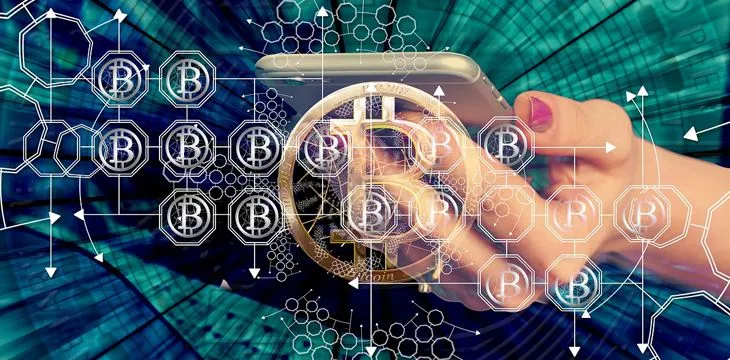|
Getting your Trinity Audio player ready...
|
The BTC block subsidy halving happened a month ago, and despite all the mainstream chatter predicting a price spike following the event, BTC’s unit price is currently around the US$9,500 mark. Between May 11 and 15, it went from $8,600 to almost $9,800, and it has fluctuated since then. Other assets have had similar fortunes. In the absence of significant news, what makes those prices rise and fall? It’s time to take another look at USDT, the USD-pegged “stablecoin” otherwise known as Tether.
Most long-term digital asset watchers (including us) never thought it was realistic to expect the BTC price to double immediately post-halving, because that has never happened before. Gains, where they came, were in the year following a halving and might have been more correlation than causation.
Longer-term, BTC transaction processors (aka “miners”) must rely on BTC value increases to continue making a profit. BTC’s 1-4MB block size means a transaction maximum of ~4-7 per second, and there’s no room for processing data other than payments and blockchain settlements. A single transaction might cost US$5 or more at times, but it’s still not enough to pay the miners.
This article is neither investment advice nor a prediction that BTC’s price will necessarily do anything special post-halving. It’s merely an observation and even a warning that BTC price moves do not represent real value.
We haven’t seen any news regarding new BTC features, sudden mass adoption or an increase in its utility lately. In recent years, there hasn’t been a major business or other entity announcing it would use BTC. In fact, it’s quite the opposite as many merchants who once accepted BTC have decided it wasn’t worthwhile. Yet BTC continues to rise or fall every day, based mainly on traders’ speculation.
Around halving time, high profile hedge fund investors like Paul Tudor Jones appeared in the mainstream media promoting BTC as an inflation hedge against the U.S. dollar. It was pertinent, given the U.S. Federal Reserve’s money-creation orgy since 2008 and especially following the 2020 COVID-19 pandemic. This hedging role has, in the past, been largely gold’s domain. Yet there hasn’t been a huge rush to hold BTC or any other digital asset.
Where does BTC-buying money come from?
The “Whale Alert” Twitter account tracks large transfers of various digital assets between wallets, which often signal price moves. Of particular interest, though, is when the Tether Treasury “mints” new USDT coins and they begin moving to large exchanges like Binance and Bitfinex. Market watchers have noted that whenever millions of new USDT appear in exchange wallets, BTC is about to rise.
On May 8, 2020, the Tether Treasury minted 120 million new USDT. Read the replies to this tweet to see what speculators expected to see next:
💵 💵 💵 💵 💵 💵 💵 💵 💵 💵 120,000,000 #USDT (119,766,698 USD) minted at Tether Treasury
— Whale Alert (@whale_alert) May 7, 2020
That’s a nice bonus for price speculators. But is this really the Bitcoin economy we wanted? For those who still remember, Bitcoin was supposed to be about freeing money and building a new kind of financial system that included everyone, from micro-transactors to large businesses. Would Bitcoin have ever won the following it has if the headline to its 2008 whitepaper had read “Bitcoin: a peer-to-peer electronic pump and dump scheme”?
What is Tether and why is it controversial?
Tether is (in theory) USD and EUR-equivalent “stablecoin” managed by Tether Limited, a wholly-owned subsidiary of Tether Holdings Limited. Tether Limited and Bitfinex, one of the largest BTC exchanges by volume, both share a CEO: Jan van der Velde. Bitfinex was the first exchange to allow USDT trading and there have been several shifting personnel links between Bitfinex and Tether over the years.
The initial idea was to have a USD surrogate without needing to use (or transfer) actual USD, since the latter was proving problematic in the banking system. Tether was initially backed by equivalent reserves of U.S. dollars, and would have a stable value of approximately US$1. With a few notable exceptions where the price decoupled from USD by more than a few cents, this has mostly stayed true. This is despite Tether never verifying its USD reserves with an independent audit, and Tether Limited’s own lawyer stating in 2019 that each USDT was in reality backed by just US$0.74 “real” dollars.
Few businesses accept USDT as payment, and for the large part it’s an exchange-only asset. There are currently over 9 billion Tethers in existence — demand goes up when BTC falls, and falls when BTC rises. In 2018, USDT trades reportedly made up 80% of BTC trading volume.
Both Bitfinex and Tether have been the subject of numerous lawsuits and regulatory investigations. In 2019, New York Attorney General Letitia James alleged Bitfinex had used Tether’s reserves to cover a US$850 million loss after transferring similar amounts without contract to a Panamanian firm called Crypto Capital. Though unproven, many critics have claimed Tether may not be backed by anything at all, and that it is a kind of digital fiat currency used to drive BTC price up or down.
Despite the seismic legal ground on which USDT exists, and the dubious explanations for its market value/price peg, exchange speculators appear willing to “trust” the coin enough to use it in trades with other digital assets.
Tether drives BTC, which influences all the others
Looking at the charts, it’s clear there is a relationship between price movements across the top market cap digital assets. BTC, XRP, ETH, BCH, BSV—even ADA, EOS, and Tezos—have all risen and fallen on similar trendlines over the past week. Though there are occasionally exceptions to this trend, non-ideological traders don’t see enough difference between digital assets to make large bets on one over another. Digital asset prices seem to reflect general sentiment towards the blockchain space, rather than careful analysis of one asset’s long-term feasibility.
Bitfinex also supports BSV/USD trading. Newly-minted Tethers land at exchanges whether they support or eschew BSV. So Bitcoin (and other assets) also come under Tether’s price influence.
The Bitcoin SV community, however, views this as neither feasible nor desirable. Sudden rises and falls are not good for Bitcoin and they’re not healthy for any other asset. Volatility like this only attracts speculators and gamblers, raise regulators’ eyebrows, and prevent blockchain from being taken seriously. It’s the reason digital assets aren’t used much for anything other than trading, and the “HODL” mentality that deters users from actually spending Bitcoin. Why spend now when it could be worth 50 times as much a year from now? (if only briefly).
Mainstream media articles bring in new investors as the price rises. BTC speculators sell their coins to these new investors when the price is high, and the price then falls. Exchanges like Bitfinex and Binance add to the frenzy with ridiculously high leveraged trading. All the while, there may not even be any “real money” entering the market.
That’s not how you build a new digital economy. Bitcoin must be useful and usable if it’s to play a major role in the future. BSV’s value proposition is micropayments, secure/immutable data processing for enterprise and government, and high transaction volumes. It’s far better for the BSV price to rise gradually, or stay the same, if this is to happen. Look at the financial successes of multi-generational business empires versus lottery winners for an example.
What would happen to BTC (and in turn, most digital assets) if the USDT rug were suddenly pulled out from underneath them? Given Tether’s history, economy and precarious legal situation, it’s very possible. Commentators have even discussed the possibility for years, but mostly within the interest community. The mainstream media rarely if ever discusses it.
Let’s have a real Bitcoin economy instead
Satoshi Nakamoto never wanted Bitcoin to be a recurring speculative souffle, and any sensible investor would observe that such assets are poor long-term bets. The BTC community has done little to promote its actual use as money, and price talk dominates the conversation.
Bitcoin BSV didn’t just restore Satoshi’s vision by restoring and locking the original Bitcoin protocol. It also restored Bitcoin’s original promise to create a new economy based on micropayments and data processing; a true digital and internet-native financial network.
BSV’s economy is based on real economic incentives for its transaction processors. It removed the block size limits (which were never part of the original protocol) to create a Bitcoin economy driven by real utility and small fees in large volumes. The BSV community prefers real users to fake dollars and inflated prices to pay old bagholders with the new ones’ money. There’s another word for that kind of scheme, and it’s one no serious person should want associated with Bitcoin.

 08-26-2025
08-26-2025 





